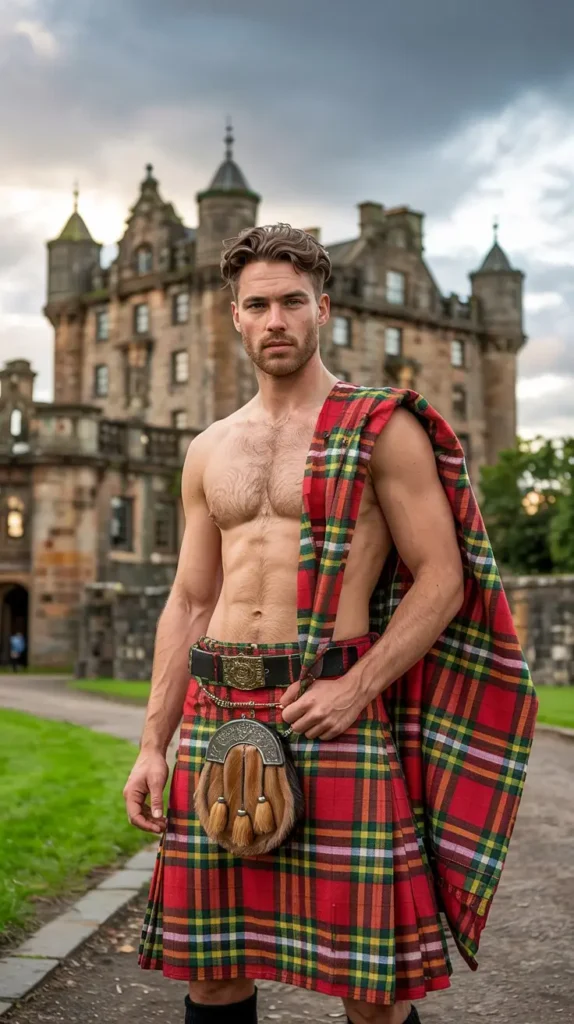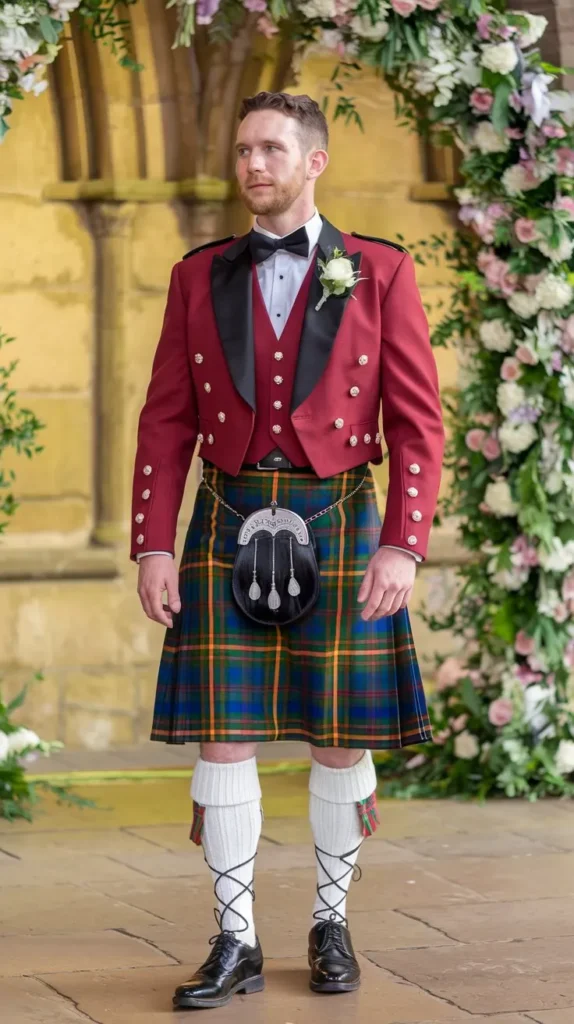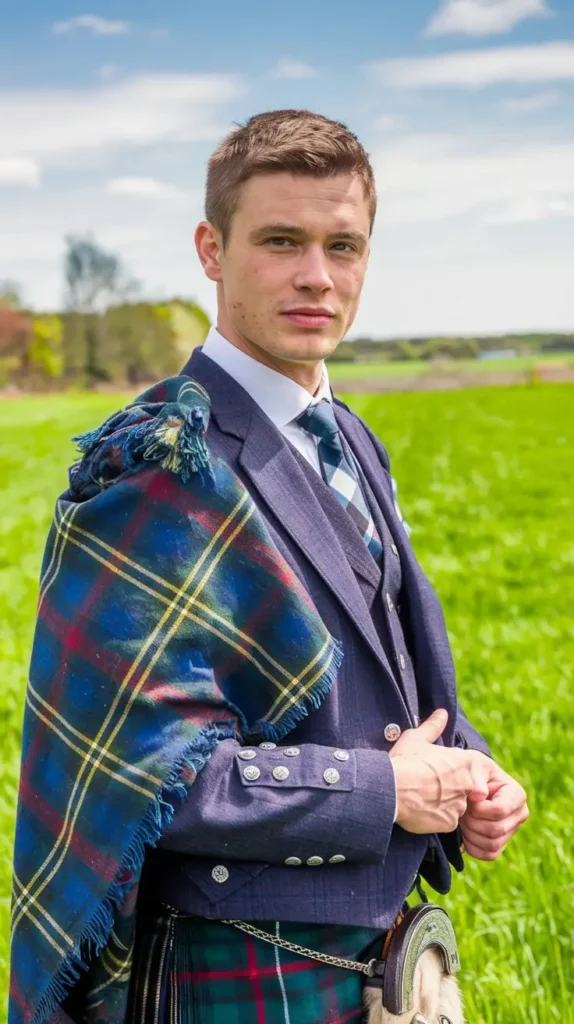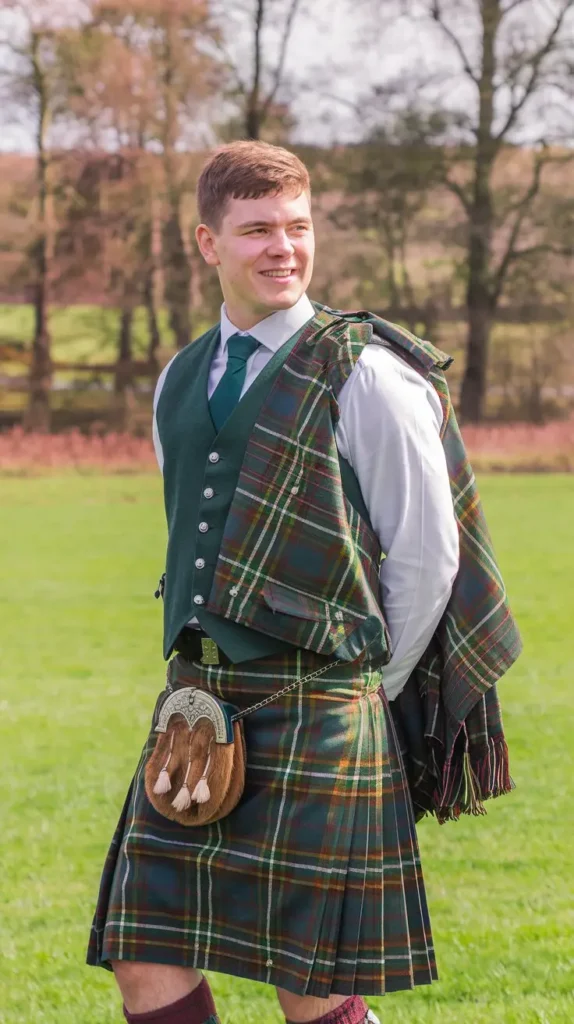Authentic Scotland Outfits – Traditional Scottish Attire For Scotsman
Step into heritage with handcrafted Scottish clothing for weddings, Highland Games, ceremonies, and everyday wear.



Get premium-quality Scottish clothing for weddings, Highland games, ceremonies, and cultural celebrations, such as kilts, jackets, and sporrans.
Explore Our Scotland Traditional Attire:
Whether you’re dressing for a wedding, a Highland event, or just want to show off your roots, our Scotland traditional outfits have you covered. From classic kilts to full ceremonial looks, this collection brings together the best of Scottish heritage and everyday comfort—for men, women, and even the little ones.
🎽 Why Our Scotland Outfits Stand Out:
✅ Quality Craftsmanship, Historic Pride
🧵 Authentic Materials
Made using premium 16oz acrylic and wool blend tartans—crafted for durability.
📏 Custom Fit Available
Sizes from 25″ to 70″ waist and lengths from 17″ to 36″ — Big & Tall friendly.

🎨 Over 2,000 Tartan Options
Represent your clan or pick a universal design. Fully customizable.
🪡 Handmade Detailing
Precision stitching, reinforced pleats, adjustable waistbands.
🔥 Complete Scotland Outfit Packages
Choose from curated bundles tailored for every event:
🛒 Scotland Outfit Packages Include:
What Our Customers Are Saying
(FAQs) About Scotland Outfits

Scotland Outfits: A Closer Look at Traditional Attire
Scotland outfits carry something that most modern clothing doesn’t. They tell a story—sometimes your own, sometimes one that’s been passed down for centuries. And maybe that’s why people still seek them out. Not just for weddings or special occasions, but for the feeling they bring. The way they connect you to something older, something rooted.
Of course, when we talk about Scotland traditional attire, the first thing that comes to mind is probably the kilt. That’s fair. It’s iconic. But the picture is actually a little bigger than that. Kilts are just the start. The full ensemble—jacket, sporran, hose, flashes, brogues—each piece adds depth, both visually and culturally.
And yet, traditional Scottish clothing isn’t stuck in the past. That’s something a lot of people don’t realize. It evolves. Slowly, yes, but it does. Even within the rules of tradition, there’s room for personal style, for reinterpretation. The result? You get an outfit that feels respectful of history without being a costume.
What Defines Scotland Traditional Attire?
Well, it depends a bit on the occasion—and, honestly, on who you ask. There’s no single uniform, though there are recurring elements that define the look. At its core, Scotland traditional attire usually includes:
- The kilt, often in a family or regional tartan
- A jacket, such as the Argyll or Prince Charlie style
- A sporran, worn around the waist to serve as a pocket
- Kilt hose and flashes, with colors that complement the tartan
- Ghillie brogues, those distinctive shoes with long laces
- And often, a sgian dubh, the small knife tucked into the sock
Formal versions may include a waistcoat, or even a fly plaid draped over the shoulder. For more relaxed events—like Highland games or day festivals—people often tone it down, swapping out jackets for shirts and vests, or going without the heavier accessories.
That’s one of the things I appreciate about it. It’s not rigid. There are guidelines, yes, but they aren’t commandments. You can follow them closely or adapt them to suit the moment.
Why People Still Choose Traditional Scotland Outfits
There’s no denying it’s a bold look. Not in a loud way—but there’s a quiet confidence in it. Wearing traditional Scotland attire signals pride, intention, maybe even a kind of reverence. It’s a statement, but a grounded one.
A lot of folks come to it through heritage. They want to represent their clan or honor their ancestry. Others are drawn to the symbolism, the craft, the way the outfit just… feels meaningful. I’ve even had friends who wore a full Scottish outfit for a destination wedding, even though they weren’t Scottish at all. They just liked the energy of it—the ceremony, the weight, both literal and figurative.
There’s also something about the tactile nature of these outfits. Heavy wool, leather straps, brass buttons. When you wear it, you feel it. Which sounds obvious, but I think that matters. It forces you to be present. You’re not just slipping into jeans and a T-shirt—you’re stepping into something else.
Beyond the Kilt: The Full Picture of Scotland Outfits
People sometimes assume that once you’ve got a kilt, you’re done. But actually, it’s the details that bring the whole outfit together. The right jacket—cut to complement the kilt’s pleats. The sporran, whether it’s a simple leather day sporran or an ornate fur one for evening wear. Each piece adds a layer of intention.
And it doesn’t have to be overwhelming. Building your outfit can be gradual. Start with the basics, then add on as you go. Choose a tartan that resonates, even if it’s not tied to a family name. That’s okay. There’s room in the tradition for appreciation, not just ancestry.
We see this with modern takes on Scotland traditional attire too. Some prefer subdued tartans. Others go for bright, bold patterns. Jackets are being tailored slimmer, fabrics are becoming lighter for comfort, especially for those wearing them in warmer climates. Not everything changes—but some things shift, slowly.
Finding The Right Fit (Literally and Culturally)
One of the more overlooked parts of Scotland outfits is fit. Not just the size, but the way it all sits together. A good kilt should sit high at the waist, fall just at the knee, and hang with weight. The jacket should frame the shoulders without restricting movement. The sporran? It shouldn’t swing like a pendulum, but it will move a bit—part of the charm, really.
Choosing the right pieces isn’t about mimicking a magazine photo. It’s about figuring out what makes you feel authentic in the outfit. For some, that means staying strictly traditional. For others, it means mixing elements, updating colors, trying modern accessories.
It’s okay to experiment. Maybe even preferable.
The Takeaway:
Scotland outfits aren’t about perfection. They’re about presence. About showing up to something—be it a wedding, a ceilidh, or a ceremony—with a sense of awareness. Of connection. You’re not just wearing a look; you’re stepping into a lineage.
And sure, it might take a little time to get the pieces right. You might second-guess the tartan or wonder if the flashes clash. But once it all comes together, once you look in the mirror and see not just the fabric but the form—it clicks.
It’s not just traditional attire. It’s something personal. Maybe even timeless.









